

 Is it worth ageing wine?
Is it worth ageing wine?
“With age comes complexity but wines get more similar with time. You find more nuances in young wines. They are purer and wilder and you can taste the place where they came from and the earth in which the grapes are grown.”
This quote comes from a Portuguese winemaker and there is a lot of truth in it. Try to guess the origin of an older wine and you will see. It’s not easy. An old hermitage tastes like an old bordeaux like an old rioja like an old chianti, just to take one example. Nigh impossible to tell the difference. In the wine world, youth is undervalued.
Admittedly, most wines are drunk young, but an old wine still put a sparkle in people’s eyes. Or maybe not so much anymore? But often we have the feeling when we taste young wines together with other people that they think the wines should be aged. That you simply don’t drink wines as young as these. You wait.
But do people really like the taste of old wines? (When a wine is considered “old” is of course open to discussion.)
I have innumerable times listened to stories about people who say they poured out the wine in the drain because it was undrinkable. Wines of supposedly good quality. If the wine is just old, too old, undrinkable or not, is a matter of taste. But it is important to understand what happens to a wine when it gets older. The change is more important than perhaps you realize. It is true, complexity comes (sometimes) with age, but, as the Portuguese points out above, the initial character of the wine disappears. The wine may be delicious, but it is much more “anonymous” than it was in its youth.
Age is not a purpose of its own in wine and it is not necessarily so that a wine improves with age. It will definitely change into something different. But rarely change to “bad”.
The vast majority of consumers are used to drinking wines that are quite young. There are few people who regularly drink old wines, so most people simply don’t have the habit and experience of drinking old wines. And old wines are different. When the cork is pulled out of the old venerable bottle at that special occasion, the flavours are completely different from what one is used to in a wine. Dried fruits, leather, not very much fruit and freshness, almost some sweetness… And then one thinks something is wrong with the wine because it is “strange”, and out it goes in the sink. But maybe the wine was just old. And different.
When you ask a producer when they think one should drink their wine they often answer “now”, or maybe “if you like it now, drink it now.” Maybe it is in their interest. Drink up and buy a new bottle!
But surely purer and wilder sounds quite attractive?
Wine Tours
It is time to start planning your vinous excursions this coming autumn. We have two very delicious wine tours coming up in September and October, to Champagne and to Bordeaux. Book now! More info in the Brief.
And if you like long term planning, and long distance travelling, we have almost finished the programs for the winter of 2020, with Chile-Argentina, South Africa, and New Zealand. More info in the Brief.
By the way, in a little over one week’s time we’re off to New Zealand for this year’s Kiwi adventure. Exciting!
Why travel with BKWine?
This month’s argument is that BKWine is one of the few true wine tour specialists with more experience and more completed wine tours than almost anyone else. And that we make tours that are designed for you, not because we want to sell you some wine (we don’t sell wine) or have some deal with an importer; instead we make tours to give you the best travel experience and the best wine experience.
Enjoy the Brief!
Britt & Per
PS: Recommend to your friends to read the Brief!
– – – – –
What’s on at BKWine Tours
2019
- New Zealand, March 11-26, 2019
- Bordeaux, April 10-14, 2019
- Champagne, September 11-15, 2019
- Bordeaux, October 2-6, 2019
2020
- Chile and Argentina, Jan-Feb, 2020
- South Africa, February 15-23, 2020
- New Zealand, March 2020
- More to come
For more information please contact us on email or on phone (we’re on French time), or go to our wine travel site on www.bkwinetours.com!
We also make custom designed wine tours – on-demand tours for you and a group of friends, for your company (maybe to scout new winegrowers?), for a special event… We can combine winery visits and wine touring with other activities: gastronomic workshops, visit to an oyster farm, truffles hunting, cheese making, and more. More info on the custom designed and bespoke BKWine wine tours and travel here!
Read our book(s)
We have written several wine books, nine at the last count. One of them has been translated to English; the others are (so far) only available in Swedish. This is the one that is available in English: Biodynamic, Organic and Natural Winemaking, Sustainable Viticulture and Viniculture
All our books are on wine, but on different subjects: wines of the Languedoc, wine growing and wine making, the wines of France, Tuscany, Bordeaux, Piedmont, Burgundy, Champagne. Several have won prestigeous prizes and awards. Read more on our wine books.
From the World of Wine
In Brief
In short, news and stuff from the world of wine.
Is Prosecco a grape or an origin?
A Prosecco debate rages in both Australia and New Zealand. The big question is whether Prosecco should be considered as being a grape variety or a geographical origin. Up until 2009, Prosecco was the name of the grape with which the sparkling wine Prosecco was produced in north-eastern Italy. But then the Italians changed the name of the grape to Glera and decided that Prosecco was a geographical name in order to protect the name and prevent others within the EU from using it. Now the EU wants to extend this protection to countries outside the Community.
The EU is currently renegotiating its trade agreement with New Zealand. If the country accepts EU’s requirements, it would mean the end of domestic Prosecco production and the import into New Zealand of the Australian Prosecco. However, the risk seems small. New Zealand, and Australia, consider Prosecco to be a grape and nothing else. And a grape name cannot be protected. Read about the discussions between the EU and New Zealand on Prosecco: meininger.
Travel: Come on a wine tour to New Zealand with BKWine.
Wine Paris, finally Paris has a major wine fair
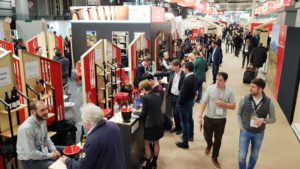 Paris’ first major professional wine fair, Wine Paris, took place on 11-13 February. Many consider it about time that the French capital hosts a large wine fair. Wine Paris is a merger of Wine Vision and Vinisud. Wine Vision is a fair that made its debut in Paris in February 2018 with exhibitors from France’s so-called “cool climates”, such as Champagne, Burgundy, Loire and Alsace. Since 1994, Vinisud has been a very popular trade show in Montpellier with producers from southern France and the whole of the Mediterranean basin. In other words, Wine Paris covers the whole of France and quite a bit international.
Paris’ first major professional wine fair, Wine Paris, took place on 11-13 February. Many consider it about time that the French capital hosts a large wine fair. Wine Paris is a merger of Wine Vision and Vinisud. Wine Vision is a fair that made its debut in Paris in February 2018 with exhibitors from France’s so-called “cool climates”, such as Champagne, Burgundy, Loire and Alsace. Since 1994, Vinisud has been a very popular trade show in Montpellier with producers from southern France and the whole of the Mediterranean basin. In other words, Wine Paris covers the whole of France and quite a bit international.
Many positive voices were heard during the three days of Wine Paris, including a Burgundy producer who chose to come to Paris instead of going to Prowein, the major competitor in Düsseldorf. And who also thought she made better contacts in Paris. Other exhibitors were less happy, especially with the number of visitors, but it is always difficult to draw conclusions after the first year. In any case, optimism reins for 2020 when Wine Paris takes place February 10-12. Put it in your agenda! More info: wineparis.
French coopers honours California
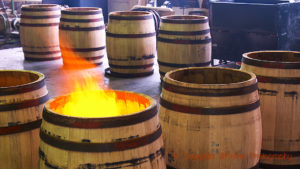 The French Coopers’ Association (Fédération des Tonneliers de France) recently held its annual meeting in Napa Valley, California. It was the first time they gathered outside France. That the meeting took place in Napa is not a coincidence. It was the Californian wine industry that gave new life to the French cooperage (barrel making) industry in the 1970s. That’s the time when the fashion of ageing wines in new oak barrels started. A fashion that soon spread like wildfire all over the world.
The French Coopers’ Association (Fédération des Tonneliers de France) recently held its annual meeting in Napa Valley, California. It was the first time they gathered outside France. That the meeting took place in Napa is not a coincidence. It was the Californian wine industry that gave new life to the French cooperage (barrel making) industry in the 1970s. That’s the time when the fashion of ageing wines in new oak barrels started. A fashion that soon spread like wildfire all over the world.
Today, the United States is the largest importer of French oak barrels. The US buys around 200,000 barrels annually from France, which is about one third of the total French production of just over 600,000 barrels. Almost 70% of French oak barrels are exported. Other major exporting countries are Spain, Australia and Italy. The barrels are made in many different sizes: Bordeaux barriques of 225 liters, Burgundy pièces of 228 liters and the larger tonneaux, demi-muids, cuves and foudres. In France, there are about 60 coopers (barrel makers). Read more: tonneliersdefrance.
Are South African wines finally about to get a bit more expensive?
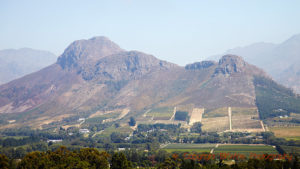 There is no doubt about it. South African wines have been too cheap for too long. Therefore, it was uplifting to read the report on South African wine exports 2018 from WoSA (Wines of South Africa). The export value is finally increasing, after many years of immobility. WoSA has struggled to make this happen for a long time. As an example, the value of exports to Sweden in 2018 increased by 10%. We hope that the trend will continue so that everyone involved in the South African wine industry can get paid decently for their jobs. In total, the export value of bottled wine increased by 3% and of bulk wine by 7%.
There is no doubt about it. South African wines have been too cheap for too long. Therefore, it was uplifting to read the report on South African wine exports 2018 from WoSA (Wines of South Africa). The export value is finally increasing, after many years of immobility. WoSA has struggled to make this happen for a long time. As an example, the value of exports to Sweden in 2018 increased by 10%. We hope that the trend will continue so that everyone involved in the South African wine industry can get paid decently for their jobs. In total, the export value of bottled wine increased by 3% and of bulk wine by 7%.
Britain is the largest export market for South Africa. Germany is second, followed by the Netherlands. Syrah wines are the most exported red wines and Chenin Blanc the most exported whites. Chenin blanc is the most planted grape in South Africa with 19,000 hectares. Syrah is in fourth place with 11,000 hectares after Colombard with 13,000 hectares and Cabernet Sauvignon with 12,000 hectares. Read more: wosa.
Travel: The best way to help South Africa improve conditions for agricultural workers (and other poor) is to buy their wines, and of course to go to South Africa on a wine tour. Each foreign tourist that comes creates one year’s full employment for one South African.
Grenache Association promotes a southern virtuoso worthy of more appreciation
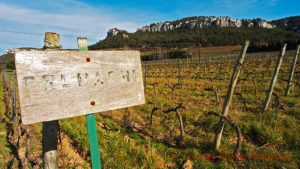 The Grenache grape is a champion of the south. It can manage scorching heat, strong winds and drought. Just a few years ago it was the most planted red variety in the world. Now it is only number five among red grapes with 163,000 hectares, after Cabernet Sauvignon (341,000 ha), Merlot (266,000 ha), Tempranillo (231,000 ha) and Syrah (190,000 ha).
The Grenache grape is a champion of the south. It can manage scorching heat, strong winds and drought. Just a few years ago it was the most planted red variety in the world. Now it is only number five among red grapes with 163,000 hectares, after Cabernet Sauvignon (341,000 ha), Merlot (266,000 ha), Tempranillo (231,000 ha) and Syrah (190,000 ha).
The Grenache Association is working on improving the image of the Grenache. The grape is much planted but not so well-known among consumers. Marlène Angelloz from the Grenache Association talked at a seminar at Wine Paris earlier in February about this grape being the quintessence of the Mediterranean. It is planted throughout Spain and southern France. It exists, through natural mutations (like naturally occurring GMO), in three colours: white, grey (gris in French, pink really) and red. It has many advantages, so now more and more research is being done to tackle its sensitivity to certain diseases, coulure not least. It is a favourite among many young, new wave producers all over the world. It is a warm-climate grape but wine producers, are now searching for new sites – it could be high altitude – for freshness and lower alcohol levels, says Marlène. Read more grenache-association.
OIV welcomes Pau Roca, the new general director
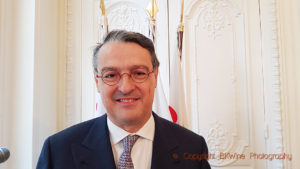 OIV, the International Organisation of Vine and Wine, welcomed a new director general in January. BKWine was present, as one of two invited media, at his inauguration and we took the chance to say hello to the new general. Pau Roca is Spanish and has been representing Spain at the OIV since 1992. He was, among other things, vice president of an expert group concerning sustainability and climate change between 2016 and 2018.
OIV, the International Organisation of Vine and Wine, welcomed a new director general in January. BKWine was present, as one of two invited media, at his inauguration and we took the chance to say hello to the new general. Pau Roca is Spanish and has been representing Spain at the OIV since 1992. He was, among other things, vice president of an expert group concerning sustainability and climate change between 2016 and 2018.
OIV is an intergovernmental organization, based in Paris. 47 countries are members of OIV. The organisation deals primarily with technical and scientific features of viticulture and winemaking. It aims for international harmonisation of practices and standards concerning the production and marketing of wine and is very implicated in e.g. areas concerning permitted practices in winemaking. Read more: oiv.
Read: OIV also has an annual wine book competition. On two occasions BKWine’s wine books have been given a prize by the OIV.
New rules for additives in organic wine
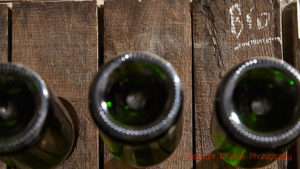 New rules came into force for vinification of organic wines on January 1st, 2019. Six new additives are allowed.
New rules came into force for vinification of organic wines on January 1st, 2019. Six new additives are allowed.
- Autolysate of yeast: Nourishes the yeast during the alcoholic and malolactic fermentation.
- Inactivated yeast: Nourishes the yeast during alcoholic and malolactic fermentation.
- Potato protein: Vegetable protein used as a fining agent. Provides a faster and often better fining than the commonly used albumin.
- Protein extracts from the yeast Saccharomyces: Can be used as a fining agent to get rid of excess tannin.
- Chitosane: Obtained from fungal organisms. Can help remove brettanomyces and reduce heavy metal levels such as iron, lead and copper.
- Yeast cell wall mannoproteins: Improves the stability of the wine by preventing potassium bitartrate precipitation (wine crystals).
Read more mon-viti. These additives (or process aids), like most other permitted ones, are not horrible cheats or faking the wine; they are rather there to make the wine better.
Read: Read more on wine making additives and organic wine in Biodynamic, Organic and Natural Winemaking.
Six new Master of Wine, including from Sweden and Denmark
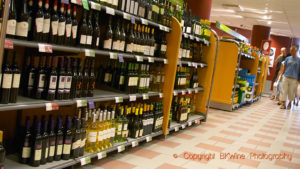 Six very fresh Masters of Wine has just received their diplomas from the venerable English institution. So now there are 384 MW in total. The happy new masters are Edouard Baijot, Nicholas Jackson, Brendan Jansen, Jonas Röjerman, Harriet Tindal and Jonas Tofterup. Congratulations to all of them. Extra special congratulations to Jonas and Jonas. Jonas Röjerman is Swedish and works at Systembolaget, the Swedish monopoly retailer, as head of quality control. His paper, the independent research work that completes the MW exam, was about evaluating the effect that staff training at Systembolaget has on customer satisfaction. Jonas Tofterup is originally from Denmark but lives in Spain. His paper was on the impact of air freight and road transport on an aged, full-bodied red wine. Read more about them here: mastersofwine.
Six very fresh Masters of Wine has just received their diplomas from the venerable English institution. So now there are 384 MW in total. The happy new masters are Edouard Baijot, Nicholas Jackson, Brendan Jansen, Jonas Röjerman, Harriet Tindal and Jonas Tofterup. Congratulations to all of them. Extra special congratulations to Jonas and Jonas. Jonas Röjerman is Swedish and works at Systembolaget, the Swedish monopoly retailer, as head of quality control. His paper, the independent research work that completes the MW exam, was about evaluating the effect that staff training at Systembolaget has on customer satisfaction. Jonas Tofterup is originally from Denmark but lives in Spain. His paper was on the impact of air freight and road transport on an aged, full-bodied red wine. Read more about them here: mastersofwine.
Features
Features that we have published during the past month, with lots of reading for you.
A big surprise: Rålund, wine made from blueberries
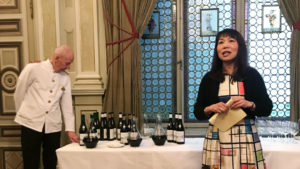 “The wine world’s outsider, literally”. Imagine starting a journey in Jerez down in the sherry triangle and finishing it up among the riesling vineyards in Piesport, Germany. You will then have travelled almost two thousand three hundred kilometres and covered most of Europe’s vineyards. That’s what you might have thought anyway. If you continue the journey two thousand three hundred kilometres further, you will end up in Skellefteå, where other crops grow. Wild fields of … blueberries.
“The wine world’s outsider, literally”. Imagine starting a journey in Jerez down in the sherry triangle and finishing it up among the riesling vineyards in Piesport, Germany. You will then have travelled almost two thousand three hundred kilometres and covered most of Europe’s vineyards. That’s what you might have thought anyway. If you continue the journey two thousand three hundred kilometres further, you will end up in Skellefteå, where other crops grow. Wild fields of … blueberries.
BKWine Magazine’s reporter Sven-Olof Johansson tells the story of a tasting of a different “wine”: A big surprise: Rålund, wine made from blueberries.
Piedmont’s treasure of lesser-known native grape varieties
 Piedmont has a wealth of little-known traditional varieties. Time to discover them! The wine region Piedmont in north-western Italy is best known for its powerful Nebbiolo wines Barolo and Barbaresco, its fruity Barbera and sweet Moscato wines. But the region has much more to offer. Piedmont hosts an impressive range of indigenous (autochthonous) grape varieties that have not yet reached international recognition.
Piedmont has a wealth of little-known traditional varieties. Time to discover them! The wine region Piedmont in north-western Italy is best known for its powerful Nebbiolo wines Barolo and Barbaresco, its fruity Barbera and sweet Moscato wines. But the region has much more to offer. Piedmont hosts an impressive range of indigenous (autochthonous) grape varieties that have not yet reached international recognition.
BKWine Magazine’s guest writer Sara Nässén went out to discover some of these little-known gems and share her discoveries with you: Piedmont’s treasure of lesser-known native grape varieties.
Travel: Come on a wine tour to Piedmont with BKWine.
Sauvignon blanc, loved and maligned, but who makes the best? | Britt on Forbes
 One of the most satisfying wines to taste blind is Sauvignon Blanc. Its aromatic character is easy to recognise. It is also a wine that is loved by many all over the world, often in a refreshing, aromatic, easy-drinking style. But is there more than it being a pool-side drink to Sauvignon Blanc? Some certainly think so. There are very ambitious wines made in France, for example Sancerre and white Bordeaux, and also in New Zealand, a country that has almost built all its international reputation on this grape.
One of the most satisfying wines to taste blind is Sauvignon Blanc. Its aromatic character is easy to recognise. It is also a wine that is loved by many all over the world, often in a refreshing, aromatic, easy-drinking style. But is there more than it being a pool-side drink to Sauvignon Blanc? Some certainly think so. There are very ambitious wines made in France, for example Sancerre and white Bordeaux, and also in New Zealand, a country that has almost built all its international reputation on this grape.
Britt talked to one of the experts in the field to find out if this grape can make great wines and who, then, is the leader of the pack. Read more on BKWine Magazine on the article originally published on Forbes: Sauvignon blanc, loved and maligned, but who makes the best? | Britt on Forbes.
Travel: Discover and taste sauvignon blanc on the wine tour to New Zealand with BKWine.
Foglia tonda, who dares to bet on the unknown Tuscan grape with the round leaves?
 A wine does not have to have strong colour to be good, just look at pinot noir and nebbiolo. But it helps, at least if one goes with many consumers’ preconceived ideas. If one were to judge by the colour, foglia tonda would be among the most treasured grapes, but instead the grape has almost completely fallen into oblivion. However, about ten producers in Tuscany agree that it is a good idea to invest in the grape with the round leaves. They gathered one morning in February to explain their work with this unknown Tuscan grape, foglia tonda.
A wine does not have to have strong colour to be good, just look at pinot noir and nebbiolo. But it helps, at least if one goes with many consumers’ preconceived ideas. If one were to judge by the colour, foglia tonda would be among the most treasured grapes, but instead the grape has almost completely fallen into oblivion. However, about ten producers in Tuscany agree that it is a good idea to invest in the grape with the round leaves. They gathered one morning in February to explain their work with this unknown Tuscan grape, foglia tonda.
BKWine Magazine’s reporter Åsa Johansson tells you the story about this unusual grape and its wines: Foglia tonda, who dares to bet on the unknown Tuscan grape with the round leaves?
Travel: Travel on a wine tour in Tuscany with BKWine.
Wine tours
Some information about current and future wine tours with BKWine.
Champagne, small growers and big houses | wine tour
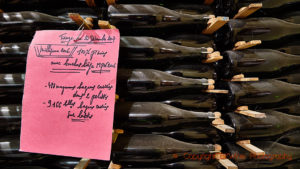 You want to buy a bottle of champagne from a small grower? Look for the letters RM on the bottle, often in small print, very small. RM means récoltant-manipulant in French and this indicates that the producer has used only his own grapes and has produced the champagne in his own winery. We like to visit these small growers but not only. On the wine tour to Champagne we will also visit at least one of the big houses. There the chance of meeting the owner or the winemaker is lesser, but instead they have impressive cellars. And for some of the small houses, well known for their top-quality champagnes, the distinction between a “house” and a grower can almost be hard to distinguish. Unless you look at the fine print on the label.
You want to buy a bottle of champagne from a small grower? Look for the letters RM on the bottle, often in small print, very small. RM means récoltant-manipulant in French and this indicates that the producer has used only his own grapes and has produced the champagne in his own winery. We like to visit these small growers but not only. On the wine tour to Champagne we will also visit at least one of the big houses. There the chance of meeting the owner or the winemaker is lesser, but instead they have impressive cellars. And for some of the small houses, well known for their top-quality champagnes, the distinction between a “house” and a grower can almost be hard to distinguish. Unless you look at the fine print on the label.
Read more about the Champagne wine tour, 11-15 September 2019. Book now!
Gastronomic surprises in Bordeaux | wine tour
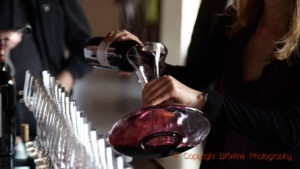 The food in Bordeaux offers some surprises. Did you know, for example, that the most popular cheese in Bordeaux is brébis des pyrénées, a sheep cheese from the Pyrenees? And that this is the only cheese in France that you serve with jam? (No, it is not really customary to serve something sweet, jelly or honey, with cheese in France.) The cheese is served in rather thin slices and with a dollop of cherry jam. Another thing that Bordeaux does, and nobody else do in France, is to serve small sausages with the oysters. The sausage is called crépinette. It is really good and does make life easier for those who do not like oysters. Maybe it is just an excuse to serve red wine with the oysters? Try yourself! Join us in Bordeaux in October and discover all kinds of gastronomic specialties. Together with delicious wines of course.
The food in Bordeaux offers some surprises. Did you know, for example, that the most popular cheese in Bordeaux is brébis des pyrénées, a sheep cheese from the Pyrenees? And that this is the only cheese in France that you serve with jam? (No, it is not really customary to serve something sweet, jelly or honey, with cheese in France.) The cheese is served in rather thin slices and with a dollop of cherry jam. Another thing that Bordeaux does, and nobody else do in France, is to serve small sausages with the oysters. The sausage is called crépinette. It is really good and does make life easier for those who do not like oysters. Maybe it is just an excuse to serve red wine with the oysters? Try yourself! Join us in Bordeaux in October and discover all kinds of gastronomic specialties. Together with delicious wines of course.
Read more about the Bordeaux wine tour 2-6 October 2019. Book now!
For the adventurous wine enthusiast, wine tours in the southern hemisphere next winter
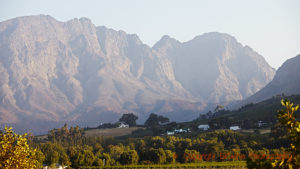 The long-distance wine tours for 2020 are also starting to take shape. We will have three magnificent wine tours where not only the wines will enthral you. The countries, the landscapes, the culture, the people, all is experiences that will stay with you for a long time. This is the plan:
The long-distance wine tours for 2020 are also starting to take shape. We will have three magnificent wine tours where not only the wines will enthral you. The countries, the landscapes, the culture, the people, all is experiences that will stay with you for a long time. This is the plan:
South America: Chile & Argentina, January-February 2020
The very popular and spectacular South America tour takes you to Buenos Aires, Mendoza, across the incredible Andes, to Chile’s exciting wine district and Valparaiso. More info soon but you can book preliminary already. It will be something like this Chile-Argentina wine tour.
South Africa, February 15–23, 2020
Discover the high-quality wines in this charming and very much under-rated wine country. Visit the classics of Stellenbosch and Franschhoek, but also new and exciting Walker Bay down the coast. The wine tour to South Africa.
New Zealand, March, 2020
A fantastic 2-week tour that will show you a big part of New Zealand, from far north all the way down to the south, a spectacular road trip. More info will follow very soon but get in touch already if you are curious or make a preliminary booking to secure your place. (This year’s NZ wine tour program is here. 2020 will be similar.)
Don’t be an egoist! Share with your friends and other wine enthusiasts! Forward the Brief to your friends! Suggest that they sign up for a free subscription !
© Copyright BKWine






